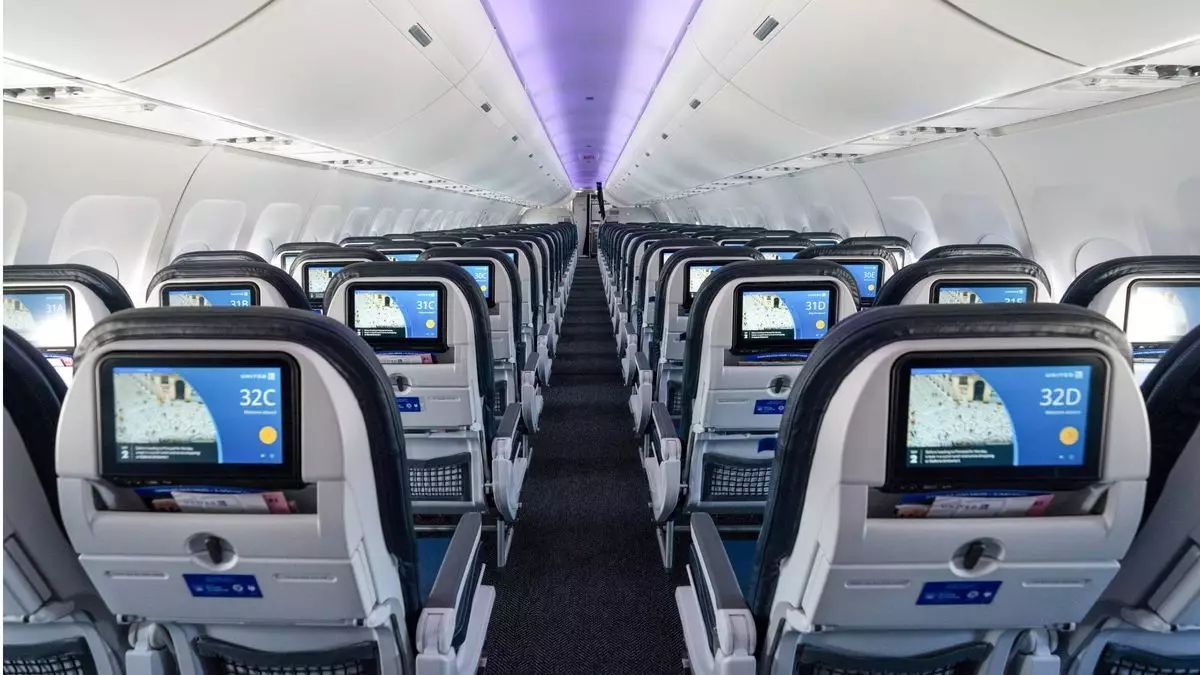Over the past few years, airlines have had to adapt their business models significantly to remain competitive and profitable. United Airlines has taken a bold stride into the budget-fare segment with its basic economy offering. This shift has not only proven to be financially advantageous but has also redefined the airline’s operational strategy amid shifting dynamics in air travel. As we analyze the performance and implications of this strategy, it becomes evident that reducing fare prices while limiting services has reshaped the business landscape for both the airline itself and travelers across the board.
According to the recent Q3 earnings call, United Airlines reported a remarkable 20% increase in revenue from its basic economy tickets compared to the previous year, which had already seen a staggering 50% growth. The airline’s Chief Commercial Officer, Andrew Nocella, emphasized that basic economy has been a „home run,“ positioning it as a significant driver of overall profitability. With about 16% of United’s domestic passengers opting for this no-frills fare, a rise from 12% the previous year indicating a marked shift in traveler preferences. This trend highlights the increasing willingness of travelers to embrace basic economy in exchange for lower ticket prices, even if it comes at the cost of added conveniences.
Opting for basic economy does come with substantial trade-offs. Passengers opting for this fare class cannot select their seats ahead of time and are limited to a personal item that fits under the seat in front of them, with no access to overhead storage. Additionally, flight changes are off the table, although travelers can retain partial credit if they cancel their tickets. These restrictions suggest that United is leveraging the psychological price sensitivity among travelers and fostering a willingness to sacrifice comfort for affordability. The growing market share of basic economy flyers might reflect a broader trend in the air travel sector where low-cost options increasingly meet consumer demands for budget-friendly travel solutions.
In light of the successes incurred via basic economy, United Airlines has ambitious plans to expand this fare category further. Larger aircraft capacity is pivotal in this strategy. By 2027, United anticipates an average of 145 seats per aircraft departure in North America, a considerable increase from the 104 seats prevalent in 2019. Current flight schedules suggest a nearly 19-seat increase in capacity per flight compared to October 2019, reflecting a clear strategy to tap into the burgeoning demand for budget flights.
This expansion does more than just cater to basic economy travelers; it also demonstrates a fluidity in United’s approach to maximizing passenger inventory, suggesting a keen market insight into shifting air travel trends. Nocella’s comments allude to a future where a diverse range of fare options could fortify United’s revenue streams while entrenching their competitive positioning against rivals.
While enhancing budget economy offerings, United Airlines is also keen to bolster its premium service tiers. The diversification of cabin options has placed United on a profitability scale similar to that of Delta Airlines and Alaska Airlines. With a pre-tax margin of 9.7% for Q3, United has surpassed Delta’s 8.9%, signifying a ripple effect of their strategic adjustments.
The growth in basic economy does not detract from premium offerings but rather complements them. This dual strategy ensures a balance in revenue stream management, which is crucial as airfares fluctuated throughout the industry. Executive insights reveal an intention to allocate capacity across various fare classes judiciously, suggesting a nascent yet aggressive long-term strategy to enhance margins while remaining competitive.
The latest earnings call signifies a transformative phase for United Airlines, one that balances basic economy success with ongoing improvements in premium offerings. As net income reported a downturn of 15.1% year over year, the stock buybacks, planned for the first time since the pandemic, offer a signal of confidence in the airline’s recovery trajectory. However, the pushback from flight attendant unions regarding these financial maneuvers points to the challenges of harmonizing corporate growth strategies with staff welfare.
Ultimately, United’s strategic pivot toward basic economy marks a daring evolution within the airline industry. It boldly addresses market demands and reveals the complexities involved in managing service trade-offs for profitability. Ensuring a firm foothold in both budget and premium markets may define United Airlines as a versatile leader as it embarks on its journey through the post-pandemic air travel landscape.


Napsat komentář